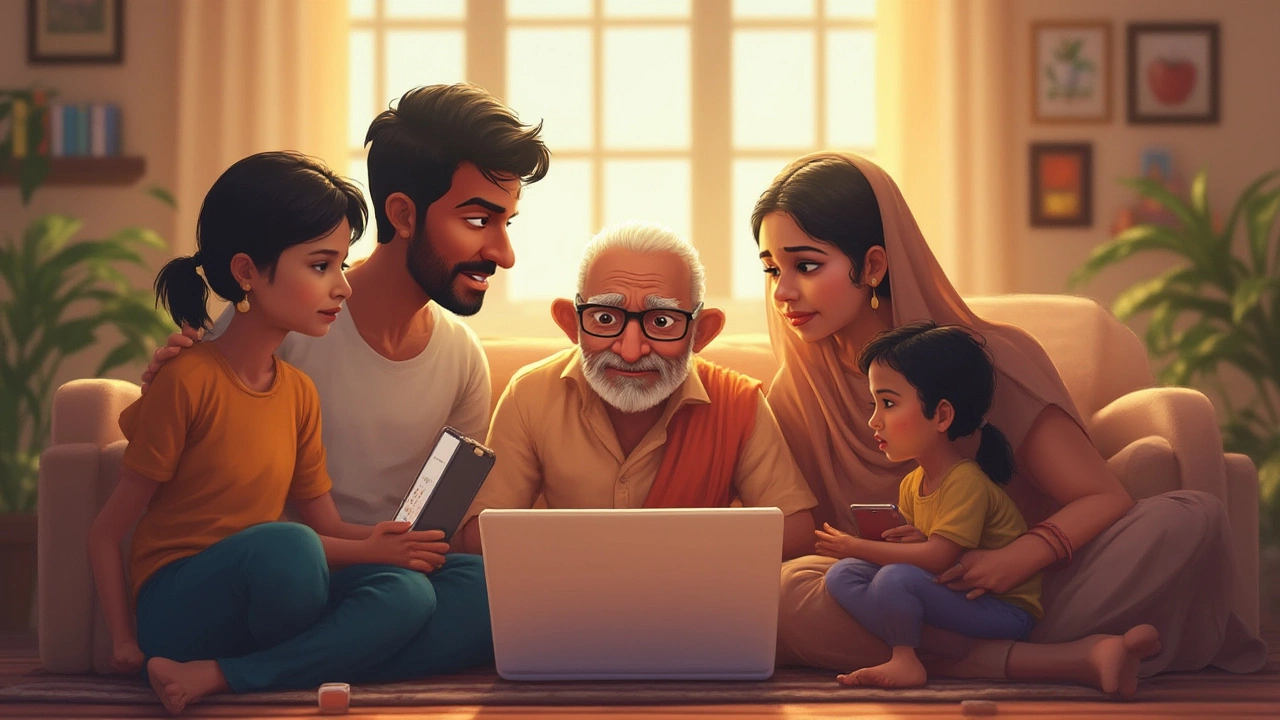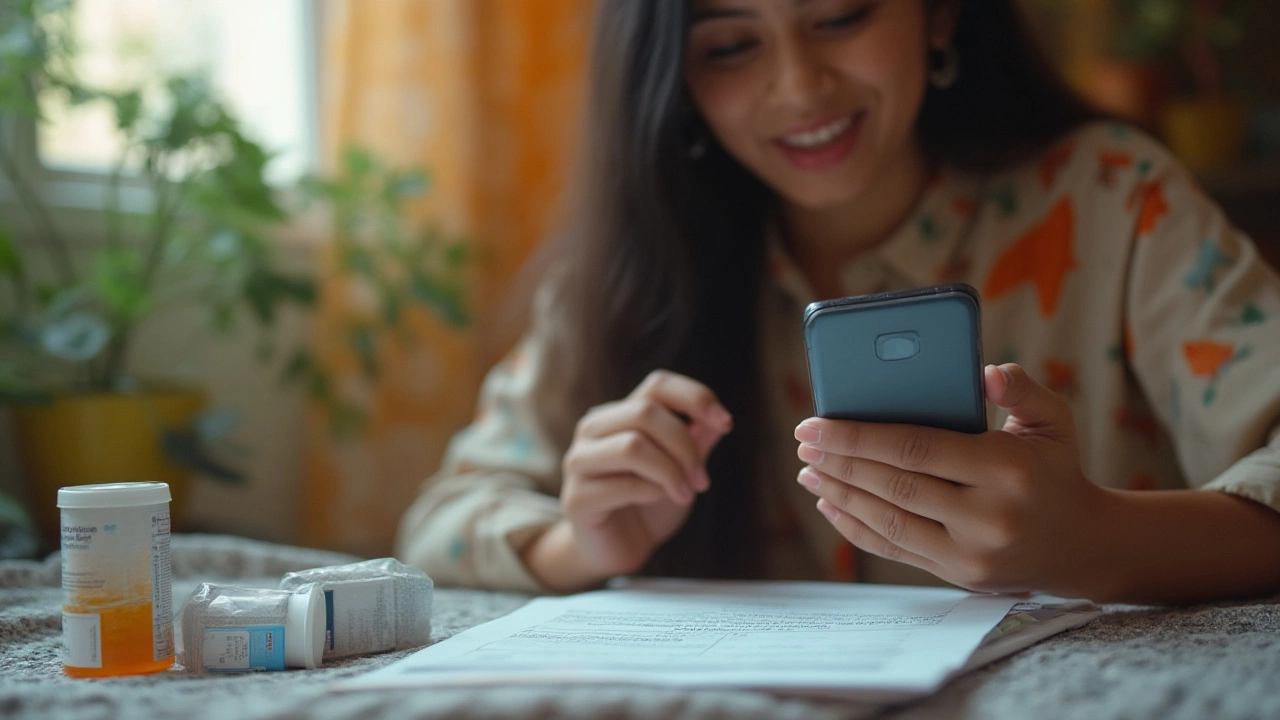-
7

How to Pick a Safe Online Pharmacy: Your Guide to Easy, Reliable Medicine Delivery
Did you know that nearly half of online pharmacies out there are either illegal or operating with barely any oversight? Sounds wild, but that’s what the National Association of Boards of Pharmacy dug up not too long ago. If you’ve ever loaded your online shopping cart with anything stronger than cold meds, you’ve probably wondered, “Am I actually getting the real deal?” I get it—I'm a dad, and nothing bugs me more than the thought of messing up my son Vihaan’s medicine routine by clicking on the wrong website. With fakes and scams lurking around every Google search, picking the right pharmacy feels more like disarming a bomb than ticking a chore off the list.
Spotting Red Flags: What Makes an Online Pharmacy Sketchy?
The internet promises convenience, but it doesn’t always deliver safety. Not every online pharmacy is your friend. There’s a reason the FDA has a running list of warning letters for rogue websites. If a pharmacy doesn’t ask for a prescription, that should set off alarm bells. No legit place will sell you prescription meds like antibiotics or blood pressure pills without proof from your doctor. If you see ultra-low prices that make you double-check your glasses, it’s usually too good to be true—many of these places sell counterfeits that might have nothing but chalk inside. And don't be sidetracked by websites plastered with trust badges or awards. Scammers love sprinkling those everywhere.
Another tip? Check the website’s contact details. A shadowy site will usually hide behind only an email form or no contact info at all. Read their "About Us" section. Real pharmacies are upfront about their physical locations and licensing. Shady ones barely mention which planet they're on. Look for secure checkout, too (that little padlock next to the URL), especially when typing in your health details. If you end up on a checkout page that looks anything like a generic email survey, close it and run.
Spotting scammers is also about reviews—real ones, not paragraphs of “Great pharmacy, super cheap, thanks!” written by bots. Start with Google Reviews or Trustpilot. Don’t hang your decision on one or two ratings; search for consistent patterns. You want people talking about hassle-free doctor verification, reliable delivery, and customer service that actually picks up the phone.
Green Flags: Features of a Trusted Online Pharmacy
Okay, so what does a legit online pharmacy actually look like? The best ones tick a few non-negotiables. First, they require a valid prescription for prescription-only meds. If you’re looking for allergy pills or painkillers and no one asks for a script, that’s a no-go. The best sites have an on-staff pharmacist you can actually contact—sometimes directly through chat or a hotline—for questions about your meds or your order. Real pharmacies embrace transparency: clear return policies, refund options, and privacy promises all spelled out, not buried in legalese.
Many trustworthy online pharmacies are certified by local health authorities or regulatory boards. In the U.S., you’ll see them listed on the NABP’s “.pharmacy” program or in Canada with a recognizable CIPA seal—almost like a pharmacy’s blue tick. You can check the online pharmacy’s license status directly on your state’s Board of Pharmacy website, too. If you’re in India, look for registration with the Central Drugs Standard Control Organization.
Always check for secure payment gateways and multiple payment options. The absence of standard methods (credit/debit cards, net banking) isn’t just an inconvenience; it often means trouble. Most proper pharmacies also offer clear shipping info, like tracking numbers, delivery timelines, and packaging details—everything you’d expect from a solid ecommerce site. If they have mobile apps, check their ratings in the app store; app reviews are usually less fake-prone than ones on random websites.

Things to Compare—Price, Delivery, and Support
Now let’s talk about what makes two good pharmacies different. One big factor: price. Sure, you want a good deal, but if prices are miles below what pharmacies charge in your city, something’s fishy. I’ve noticed that the biggest, most trustworthy online pharmacies are only a little cheaper than my neighborhood chemist, not pennies on the dollar. Watch out for hidden fees at checkout—sometimes it’s "free shipping" until you realize the delivery actually costs more than a pizza.
Delivery speed matters, too. Look for places that promise shipped orders within 24-48 hours and provide a tracking number. If your medicine is temperature-sensitive, ask how they package it. Some places use cold-chain delivery, while others might just pop it in a basic envelope—even in summer! Customer support is a game-changer. Good pharmacies offer real help, not endless hold music. Try calling or chatting even before ordering—how quickly, and how clearly they answer will tell you a lot.
Return and refund policies matter more than most people think. Sometimes a package gets delayed, or your doctor changes the prescription right after you order. Can you send unopened meds back? Do they process refunds quickly or send you on a wild goose chase? Read the fine print on their FAQ or terms page, or check real customer complaints about returns. When you’re on their site, see if they offer email or WhatsApp reminders for refills—these small features make life as a busy parent so much easier.
Double-Checking Legal & Safety Boxes Before You Click "Order"
This last round involves playing detective, but it’s worth it. Reputable online pharmacies are all about patient safety. In most countries—including India, the US, UK, and Canada—selling prescription drugs online is strictly regulated. Make sure the site lists a real, licensed pharmacist (usually with a registration number or professional credentials). If you can, visit the pharmacy regulator’s site and confirm their license. Don’t just take their word for it—some scammers copy license numbers from honest businesses.
Personal data security is huge. Look for clear privacy policies spelling out how your information is stored and used. If you’re prompted to share documents—like a prescription scan—double-check that you’re sending it through an encrypted system. Don’t ever send sensitive documents to a generic Gmail or Yahoo address; genuine pharmacies use branded emails with secure portals. If you’re feeling extra cautious (and you probably should), Google the pharmacy’s name plus “scam” to see if users have flagged major issues.
Regulators like the FDA and NABP also maintain lists of safe and unsafe pharmacy sites. You can punch the website address into their search tools. When in doubt, ask your doctor or local pharmacist for online pharmacy recommendations they trust. Sometimes a word-of-mouth suggestion from a healthcare pro trumps all the reviews in the world. And here’s a tip: set up two-factor authentication or unique passwords whenever you create an online account, because a hacked pharmacy account can expose more than just your order history.
At the end of the day, the choose online pharmacy process is about balancing convenience with safety and peace of mind. I always remind my friends: nothing ruins a good deal faster than finding out you’ve been sold expired or fake meds. Take a few extra minutes to do your homework, chat with the pharmacist, and test their support team. Once you’ve found "the one," the rest is easy—refill reminders, doorstep delivery, and more time with your family (instead of waiting in a chemist queue). Keep those habits, and your online medicine routine will run smoother than your morning coffee.